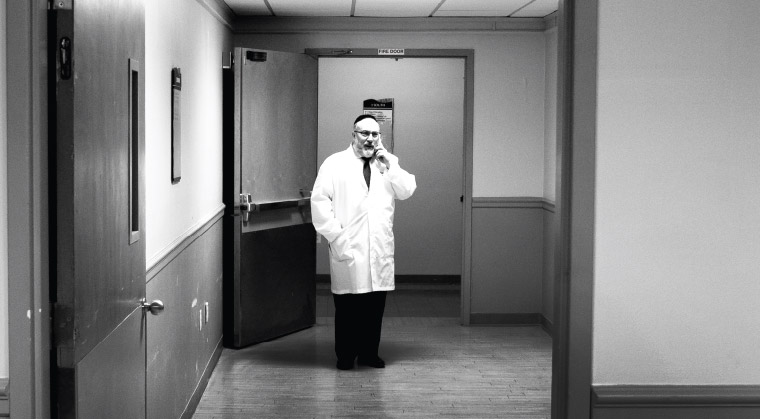With Every Breath

In a world where “quality of life” is considered the measure for life’s value, Dr. Howard Lebowitz believes only halachah should determine the time to end treatment

“We take patients that New York hospitals aren’t interested in caring for. It’s not just that we’re willing to accommodate halachah. Our mission is to allow families to live in a way consistent with halachah” (Photos: Amir Levy)
I
don’t wish anyone to have to meet Dr. Howard Lebowitz the way I did: as the savior of last recourse when family tragedy strikes. But Dr. Lebowitz has become precisely that for many frum families when state law and hospital policies cause hospitals to refuse care for cases they deem hopeless. At Specialty Hospital of Central New Jersey, his LTAC (Long Term Acute Care) facility in Lakewood, he accepts patients other doctors have given up on. And sometimes, miracles happen too.
My family came to Dr. Lebowitz following a nightmarish week in December 2016, in which our daughter Miriam suffered a rare yet often fatal complication while delivering her third child. Given her young age, the doctors labored valiantly for hours to stabilize her. But it took over half an hour to get her heart beating, and in the process, her brain underwent traumatic injury.
After a week, she was transferred to Columbia Presbyterian, where presumably the top-notch neurological department would be able to help her. But Columbia decided very quickly there was nothing to be done, and besides, her kidneys weren’t working, which created a toxic situation. When they tried to do dialysis, her blood pressure would shoot out of control.
I was alone with her on New Year’s morning when a doctor took me aside to speak. He spread out his hands in a gesture of surrender and said, “I don’t see what we can do for her.” Still in denial, I was having trouble hearing the subtext: We will have to discontinue life-support.
Shortly afterwards, a tall man with a gentle manner approached me and asked if we could speak. I took him to be a social worker sent to help family members process grief. Instead, he wanted to know which of my daughter’s organs I would like to donate. “We don’t do that,” I told him, trying to contain a volatile cocktail of emotions, “and anyway, why would I make a decision like that without consulting my family?”
My entire family, along with two rabbis close to us, were called in later that afternoon for a meeting, in which two doctors laid it on the table: They saw no reason to continue life-support, even though our daughter’s heart was beating. In desperation, we called Agudath Israel’s Chayim Aruchim halachic medical advocacy center, and with the help of Mrs. Leah Horowitz, managed to arrange for Miriam’s transfer to the care of a Dr. Howard Lebowitz in Lakewood. Grudgingly, the hospital agreed to keep our daughter alive until she could be transferred first thing the following morning.
When we joined Miriam in Lakewood, we found her in a spacious private room within Monmouth South hospital. Her vital signs were being monitored by telemetry screens as if she were still in an ICU, and we were surrounded by cheerful, compassionate staff whose attitude alone was encouraging.
Our daughter responded well to the care she received in Lakewood. Her kidneys stabilized after one round of dialysis. Her swelling went down, she processed the feeds, her skin became smooth. After two months, she began showing some reflexes, despite Columbia’s claims that she had absolutely no brain activity. When she passed away four months later, it was due not to brain injury, but to a series of infections hard to avoid in long-term care.
For my family, those extra four months of life were a blessing. That window gave us time to process the situation. Miriam’s husband and children had time to adapt to her absence at home, and the children were able to see their mother a few times. On a community level, the massive outpouring of tefillah, kabbalos, and other spiritual efforts on behalf of Miriam Chaya bas Bracha literally changed the lives of many people who rose to new levels on her behalf.
Oops! We could not locate your form.











